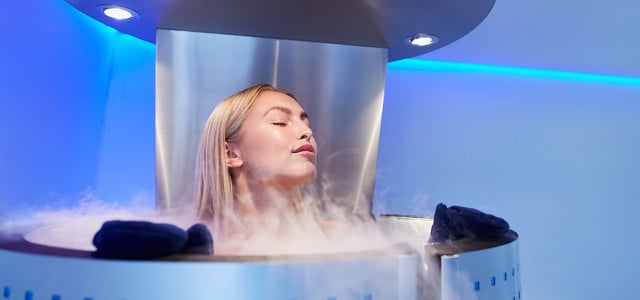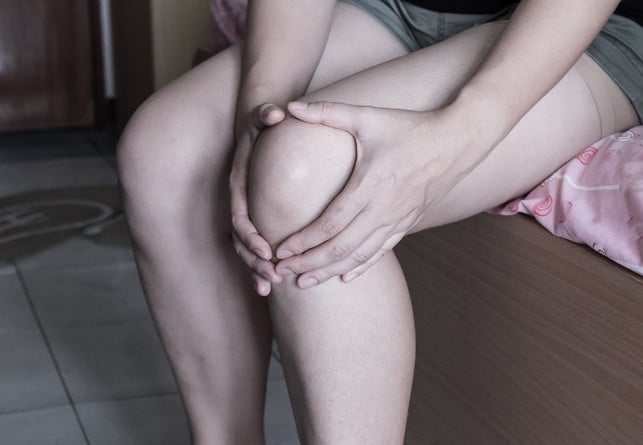
Staying in a cold sauna at temperatures as low as minus 190 degrees for a few minutes – that’s the current trend. You can find out here what the whole thing is for and whether these extreme temperatures hurt.
Cold sauna or cryosauna (“kryo” Greek for “frost”) is a slightly different type of sauna. From a medical point of view, it falls under whole-body cryotherapy (GKKT). The origins of today’s GKKT lie in Japan in 1980. Cold was used here to treat rheumatoid arthritis. This form of therapy was also introduced in Germany in 1985 as a treatment for rheumatic diseases.
A cold sauna can reach temperatures of up to minus 190 degrees Celsius. They are available in some rehabilitation facilities and specialized clinics. However, more and more studios run by private providers are being created. We will explain to you the origins, effects and process of the cold sauna.
Cold sauna: From antiquity to modernity
The cold sauna is based on an old principle, because the use of cold to keep people healthy is nothing new: short cold baths are part of Kneipp medicine. Further back, cold was used as therapy by Hippocrates, a famous doctor of antiquity. This is suggested by the Corpus Hippocratium, a collection of medical writings. Historians suspect that these writings come from different authors, but they were probably written in part by Hippocrates himself and are largely about his teachings.
The Wim Hof method by the extreme athlete of the same name, Wim Hof, is currently receiving attention. Cold weather in the form of ice bathing is part of this. The positive effects of the method have already been proven in studies. However, cold is only one of several parts of this method.
What does the cold sauna do?

(Photo: CC0 / Pixabay / nattanan23)
The origin lies in the medical field, but today the cold sauna is also used for sporting and aesthetic purposes. According to studies, short-term cold therapy is said to have numerous positive effects on health and appearance. However, there is a lack of studies on the long-term effects and further research is needed.
The following areas of application exist:
-
Muscle pain and pain reduction, for example after operations
-
Rheumatic diseases such as arthritis
-
Reducing muscle soreness
-
Skin diseases, for example neurodermatitis or psoriasis
- Spasticity
- regeneration
- Strengthening the immune system
- Stimulating metabolism
- Increasing fat burning
- Potential treatment for cancer and Alzheimer’s
In the area of high-performance sports, the cold sauna is intended to help improve performance. However, this is not sufficiently proven and is controversial among experts.
Overall, cold is invigorating and has a positive effect on your personal well-being. Cold causes the blood vessels to constrict and the blood supply is reduced. When the body warms up again after the cold sauna, the vessels expand. This simplified process has positive effects: your blood circulation improves and you absorb more oxygen.
Note: You should only go to the cold sauna if you feel healthy and fit. If you are unsure, consult a doctor to be on the safe side.
Cold sauna: process
How can you imagine a cold sauna?
-
Shape: The cold sauna looks similar to a barrel or shower cubicle that is open at the top. The head sticks out. Before the treatment begins, the height will be adjusted to your height. Next to the barrel there is a tank with liquid nitrogen that is fed into the cold sauna.
- The problem here is that since nitrogen evaporates quickly, it must be continuously cooled and pumped. This generates high energy consumption and is therefore not sustainable.
-
Temperature: The temperature in the cold sauna itself is between -160°C and -190°C. This is a dry cold. This means that the air contains little moisture, making it easy to endure the cold. In a self-experiment, the feeling is described as “pleasant tension”.
-
Duration: In total you will stay in the cold sauna for around two to three minutes. You will have direct contact with a supervisor throughout the entire treatment period. If you feel unwell, you can immediately draw attention to yourself and leave the cold sauna.
-
Clothing: Before using the cold sauna, you must undress down to your underwear. In some cases, wearing socks and gloves is recommended. However, the recommendations vary between providers.
-
Costs: The costs vary. On average these are between 30 and 50 euros. Some health insurance companies cover the costs if indicated.
Note: You should not wear any cosmetic products, creams or make-up. Take off all of your jewelry beforehand. In order to combat symptoms, regular use is recommended. However, the frequency and duration of treatment are individual.
We will introduce you to other forms of therapy that work with temperature here:
- Finnish sauna: That’s what makes it so healthy
- Sauna for a cold: There is no yes or no
- Contrast showers: A guide to strengthening the immune system
- Temazcal: This is how the Mayan steam bath works
- Temazcal: This is how the Mayan steam bath works
By the way: The cold sauna should not be confused with the cold chamber. The temperature in a cold chamber is around -110°C and several people can be in it at the same time.
Read more on Techzle\.com:
- Make your own cold bath: Mixtures for soothing baths
- Banya: This is how you take a sauna in the Russian bathhouse
- Sauna properly: This is what you should pay attention to in the sauna
Edited by Lina Brammertz
** marked with ** or orange underlined Links to sources of supply are partly partner links: If you buy here, you are actively supporting Techzle\.com, because we then receive a small part of the sales proceeds. More info.